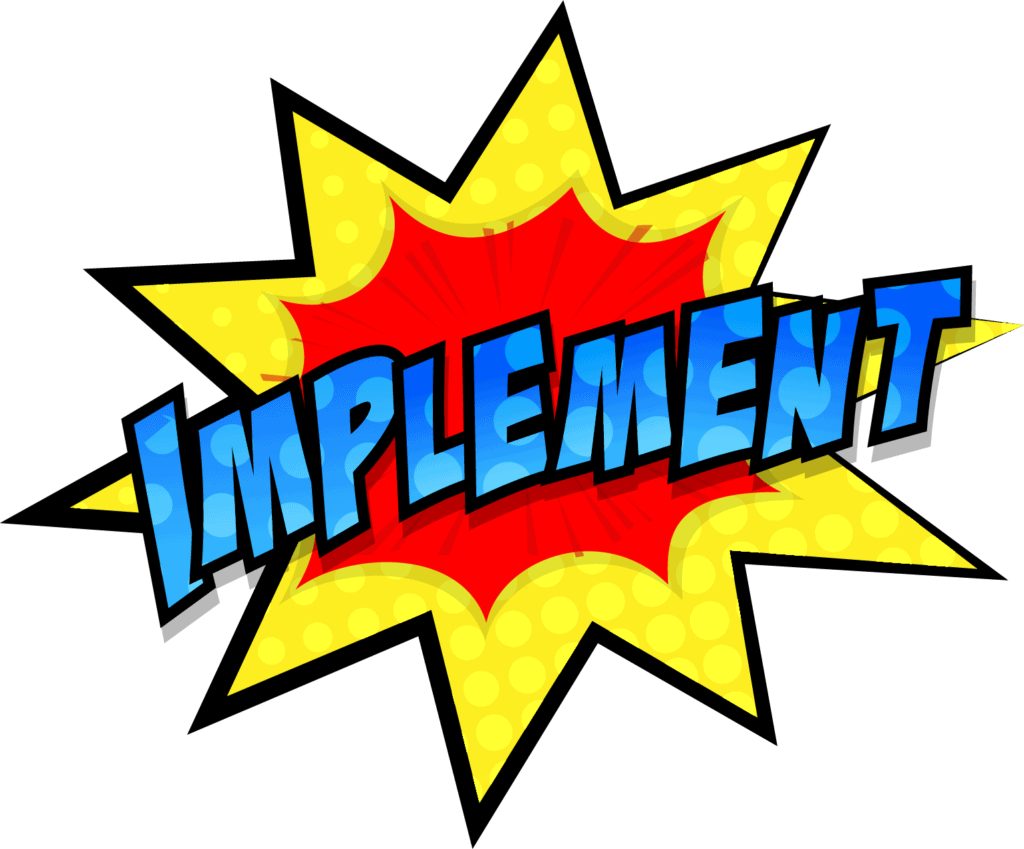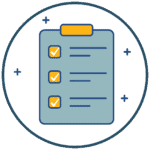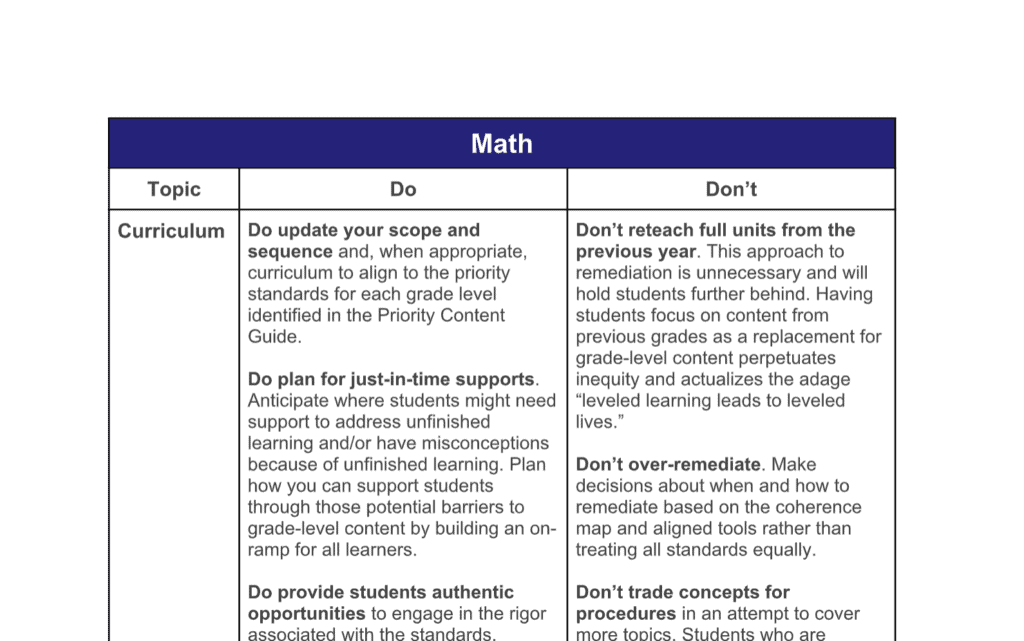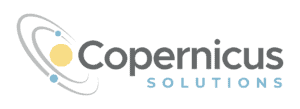IMPLEMENTATION
How do we structure the school day to support students' learning acceleration?
WHY
- The bulk of a student’s instructional experience takes place during the school day. Efforts to accelerate learning should take that into account.
- A plan is only as good as its implementation. Having a strong operational plan will be key to success.


KEY TAKEAWAYS
- Grade-level content is king. All acceleration efforts should be geared to making sure as much time as possible is spent on grade-level content and assignments.
- Focusing on grade-level content may require shifts in how staff work.
- Execution is crucial. Once you have your data, priority standards, and a pacing plan, the next critical aspect of your learning acceleration plan will be how staff execute the vision in the classroom.
Curated Tips: Staffing Considerations
The Basics: Once you have your data, priority standards, and a pacing plan, the next critical aspect of your learning acceleration plan will be how staff execute the vision in the classroom.
- Reiterate acceleration is the work. Make sure teachers know this is not an add-on to their work. This is the actual work. Consider sharing data on how most students are not receiving grade-level instruction and assignments. Then create opportunities for teachers to get feedback on their instruction and assignments.
- Assess what students need. Assess what students need both socially and emotionally as well as academically, address trauma with healing and support, and identify the next steps they are ready to take in their learning rather than labeling them. More on assessment can be found here.
- Create a culture of “CAN.” Identify who can provide support. Critically question any time a teacher claims students just cannot do grade-level work. There is always some part of the work that students can access. The belief that they “just can’t” is neither productive nor accurate. So, ask: what part can they do? What support do they need to be able to do the work? Who can provide the support, if not you? (Can you leverage a peer tutor, mentor, parent, aide, etc.?)
- Everybody has a role to play. The person often best positioned to support acceleration for students will be the teachers with direct knowledge of the student and the content. However, other staff members will be great supports as students complete grade-level work, have questions, need to talk through topics, or have misconceptions clarified.
- Pull-out time is for reading. Use pull-outs for foundational reading instruction but not for learning acceleration in core content areas, as it is not effective. If teachers need help with acceleration, consider providing paraprofessional support for guided practice while teachers work with students who have skill gaps.
- Maximize paraprofessionals and volunteers. In many cases, paraprofessionals and even volunteers can be better leveraged by creating clear training and expectations on how to support students in practicing concepts, talking through challenges, facilitating study groups, and supervising whole-group instruction as teachers work with a small group.
- Pursue tutoring, rather than tracking. Establish systems for additional time and high-quality tutoring rather than tracking. Intensive tutoring during and after school has been found to be highly effective, creating strong relationships and customizing teaching directly to student readiness and needs.
- Staffing during-school tutoring. Consider staffing a during-school tutoring program with paraprofessionals, retired teachers, and substitute teachers.
Curated Tips: Classroom Practices for Teachers
- Use priority standards. Use priority standards to guide lesson planning and assessment. It is now more important than ever before to make informed, conscious decisions about how much time and attention will be devoted to specific standards in order to maximize and accelerate learning. Those standards that don’t make the cut are not eliminated: they simply are not focused upon with the same level of intensity.
- Diagnose unfinished learning. Use formative assessment and ongoing progress monitoring to understand where gaps in students’ learning are and needs that can be addressed.
- Offer students opportunities to access grade-level text. Evidence indicates that having struggling readers read texts below grade day after day does not help them “catch up” (Steiner & Weisberg). While students need explicit instruction in foundational reading skills (K-2), as students have basic decoding skills, teachers should use more guided reading time, working in grade-level text with appropriate scaffolding and knowledge-building to help students be successful.
- Prioritize active learning over teacher talk time. Give students more opportunities to engage. Moving away from long lectures is one of the best ways to get students to learn and to allow teachers to understand the gaps that need to be filled.
- Leverage existing curriculum instead of creating your own. Student-facing work is highly variable when it comes from multiple sources. This curriculum should not be made from scratch; no need to reinvent the wheel. Rather, it should be grounded in existing high-quality curriculum and modified and/or supplemented when necessary.
- Teach students to work independently. And practice this often. Have clear strategies in place for defining expectations and success. A clear pathway will make execution easier and contribute to students’ development of self-direction skills.
- Build on prior knowledge. A crucial aspect of acceleration is building prior knowledge so students can connect new information. “Students learn faster and comprehend at a higher level when they have prior knowledge of a given concept. The correlation between academic background knowledge and achievement is staggering: prior knowledge can determine whether a 50th-percentile student sinks to the 25th percentile or rises to the 75th” (Marzano, 2004).
- Offer students opportunities for personalization. The experiences of innovative school districts across the country point to increased success when learning is personalized to individual needs, interests, and goals. Creating these types of experiences requires educators to know how to blend and personalize learning.
- Provide playlists of ways students can practice just-right learning concepts without taking time away from grade-level instruction.
- Use a rotational model to work with small groups (both heterogeneous and homogeneous). Station rotation models that include teacher time and independent work time can create opportunities to address misconceptions. Small-group instruction is an effective way to remediate in real time for students who need support. “Just-in-time support” helps students feel successful and allows them to understand grade-level content.
- Go blended. Implement blended learning to allow teachers more time to strategically accelerate learning and fill gaps and build bridges in student learning. Provide professional development and training on effective implementation of a blended model.
- Scaffold. By systematically building on students’ experiences and knowledge, teachers build confidence and understanding of complex content. Teachers should intentionally build scaffolding into lessons, keeping their students’ needs in mind in order to allow all students to access grade-level content. Here are some scaffolding strategies to think about.
- Build knowledge and vocabulary. Students’ comprehension of relevant background knowledge and vocabulary is key to understanding what they read. By using a variety of resources that focus on the topic (including multimedia resources, photographs, recordings, infographics, and other texts) teachers can build this understanding.
- Utilize collaborative student teams. Working in collaborative teams helps students tackle rigorous, grade-level work. When students work collaboratively, each member contributes to the group’s success, developing both academic and social emotional acceleration.
- Use text sets. Teachers can help prepare students to engage in conversation and tasks that they may not be ready for by strategically using text sets: curated collections of multimedia resources focused on a specific topic. This helps students get an in-depth understanding of subject matter and vocabulary in a variety of ways.
ADDITIONAL RESOURCES
- Free online courses on blended learning and learning acceleration from CCEE.
- Scaffolding Suggestions from NYSED.
- Specific strategies for grades and subjects from CCEE’s Field Guide.





